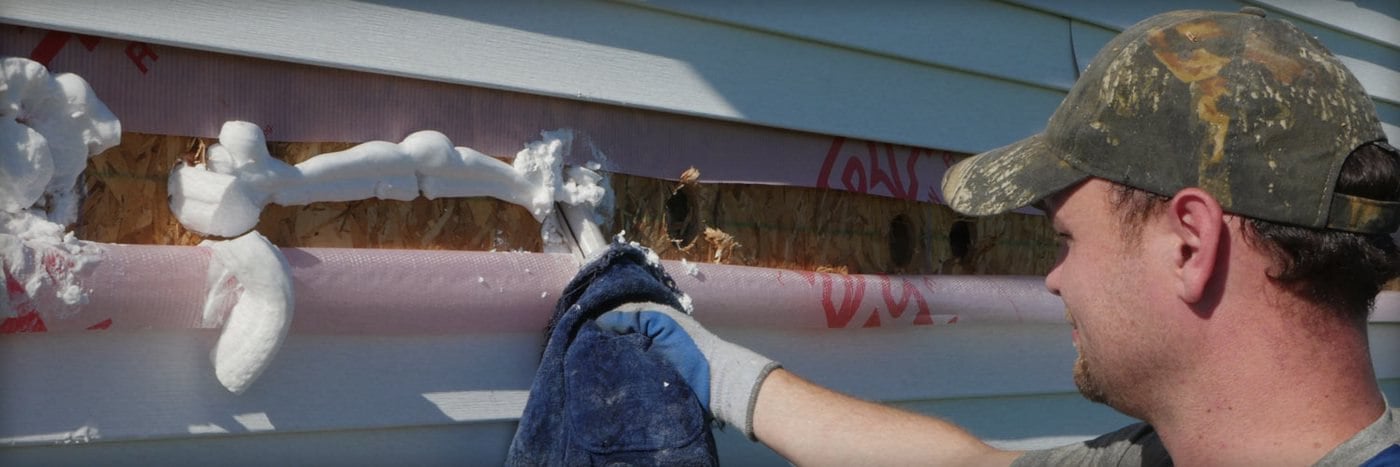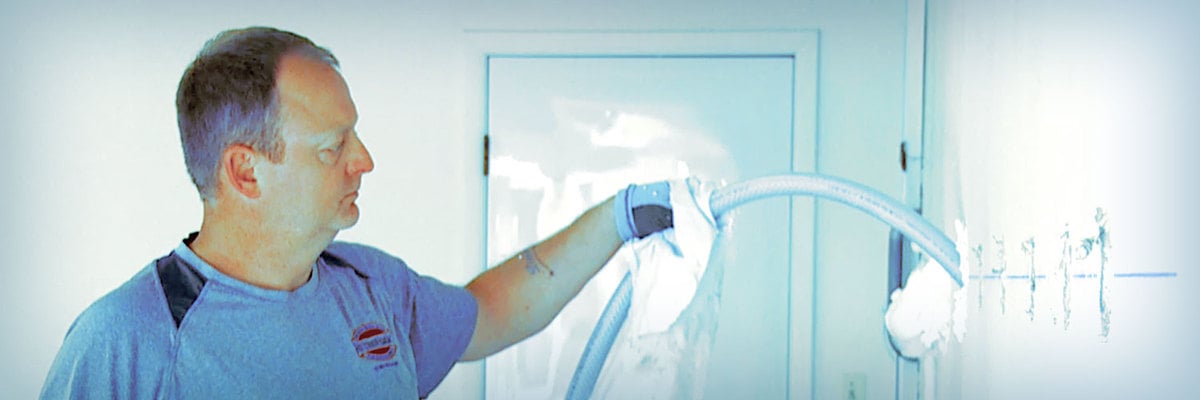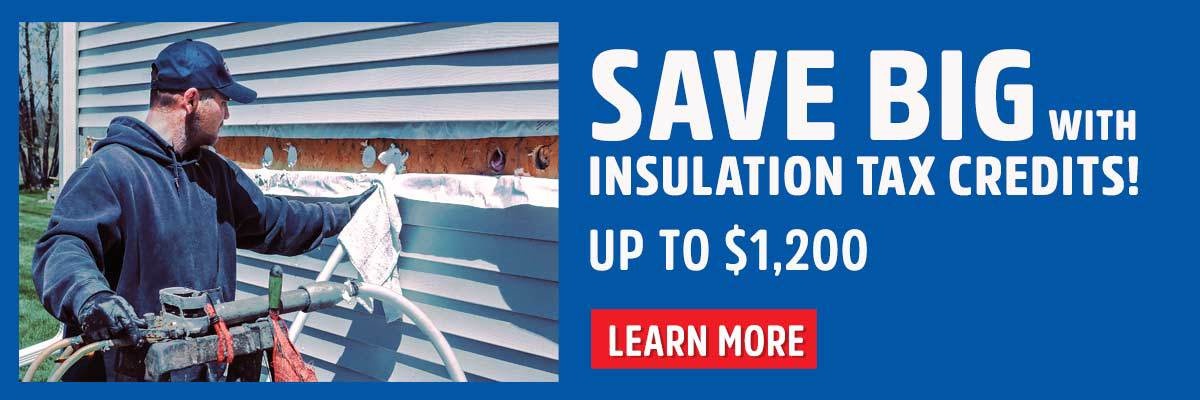How Much Does Spray Foam Insulation in Existing Walls Cost in 2025? (Prices/Rates/Factors)


Cold walls, drafts inside your home, and high energy bills are all signs you should look into insulating your home's existing walls.
The comfort inside your home should be first priority, as that is where you spend most of your life and is one of your biggest investments.
RELATED: How Much Does Foam Insulation Cost for an Existing Home?
Adding foam insulation to your existing walls creates an air seal that can take care of those cold spots and annoying drafts.
RetroFoam of Michigan has installed spray foam insulation in existing walls for thousands of homeowners across the state for more than 20 years, and our team knows that using injection foam is a convenient way to insulate walls without removing drywall or making a huge mess.
We are on a mission to educate the homeowners, so as part of that effort, we will discuss what determines the cost of foam insulation for existing walls, the installation process, and what is included in the cost.
How Much Does It Cost to Foam Insulate Existing Walls?
 When someone has their existing walls insulated, they do all of the exterior walls to seal up the building envelope. The cost of doing all four exterior walls could range anywhere from $4,300 to $8,800, depending on various factors.
When someone has their existing walls insulated, they do all of the exterior walls to seal up the building envelope. The cost of doing all four exterior walls could range anywhere from $4,300 to $8,800, depending on various factors.
The size of the treated area to be injected with foam insulation is the largest contributing factor to the cost of the project. The bigger the area to be insulated, the more expensive the job will be.
What Variables Determine the Cost of Insulating Existing Walls?
Just like any insulation job, the size of the surface area is the most significant determining factor in the price for insulating existing walls.
If a home is more than one story, then there can be additional costs due to the difficulty of the job.
When insulating the exterior walls, crews generally work from the outside, so the type of siding on the house can also be a factor in the total cost. While vinyl siding tends to be the easiest to work with, aluminum is slightly more difficult, and brick and wood are the hardest, which increases the installation cost.
We’ll go into more detail on this in just a minute.
What is the Difference Between Vinyl, Aluminum, Brick, and Wood Siding When Insulating Existing Walls?
The type of siding you have can change the installation process slightly for re-insulating existing walls.
Vinyl siding is the easiest to work with when insulating walls because it has a hook-and-loop system that makes removing and replacing it easier. It is also a polymer material, meaning it is pliable and won’t bend or crack.
Aluminum siding tends to be more difficult to work with because it isn’t pliable. When the siding bends, it must be bent back into shape, which could leave dimples and dents in it. The way aluminum siding is attached to the home makes it more difficult to work with as well. Aluminum is nailed or fastened to the exterior of the home, so crews have to unfasten the siding before the job and replace the nails when the job is finished, making it more difficult to take on and off.
Working with brick siding tends to take more time because crews must drill three holes into the mortar at the top, middle, and bottom to reach the wall cavity. While one person drills, another person follows behind them to clean up the dust and mortar. A good contractor will make the mortar on-site, and a third crew member will follow along behind the person injecting the foam to fill those holes with the mortar.
The best contractors don’t just patch the outside of the brick and mortar but instead inject the drilled holes with mortar, filling the entire space and then smoothing the area over.
RELATED: Insulating Existing Exterior Brick Walls: Should the Wythe Cavity or Between the Studs Be Done?
Wood siding is worked with completely differently than other types of siding. Many times, crews drill into the face of the wood from the outside. A chalk line is used to drill uniform 2 ½ inch holes through the siding to inject foam into the existing wall cavity.
After the foreman injects foam, another crew member follows behind them, plugging the holes with a wooden plug. Good contractors will use a tapered pine-faced plug so it is snug but not tight enough to crack the wood. Once the plugs are placed, the homeowner can easily paint over them to match the siding.
Insulating Exterior Walls from the Inside
 If the homeowner has an exterior of their home they would prefer not to have drilled into, then crews can work from inside the home.
If the homeowner has an exterior of their home they would prefer not to have drilled into, then crews can work from inside the home.
Crews can also work inside to insulate a common wall between the house and the garage.
The process is similar as crews measure out where to drill the 2 ½ inch holes in the middle of the cavity. There is also different prep work on the contractor’s part when working inside the home.
Crews lay down plastic and will have a vacuum system to clean up the dust created during the job.
Once the foam has been injected into the wall cavities, crews fill the holes with a Styrofoam plug and place mesh tape over it to hold it in place. A rough coat of mud is then spread over the area for the homeowner. There will be additional sanding and finishing required of the customer.
How to Insulate a Wall Without Removing the Drywall
Once you've agreed to the project, the excitement really kicks off with the installation process.
For exterior walls, there isn't much prep work needed before installation day. The crew will simply ask that you remove any pictures or decorations on the walls to prevent damage from the vibrations caused by drilling.
They'll also need you to clear away any outdoor furniture and cover landscaping in the work area. An experienced crew understands that some plants and landscaping features can't be moved, and they'll skillfully work around these obstacles.
When the installation begins, the team will start at one corner of the wall, drilling the first hole about 4 feet from the ground, near the wall stud. They'll use a tool called a slim jim to locate the space between the studs and drill additional holes as needed to ensure that every cavity is properly filled with injection foam.
After the holes are drilled, the lead installer will inject the foam, while another team member follows, cleaning up any excess foam and plugging the holes with styrofoam. Additional crew members will then clean the siding, sweep up foam and wood shavings from the ground, and reinstall the siding, leaving your home looking just as it did before they arrived.
The entire process works like a well-coordinated assembly line, with each crew member playing a key role to ensure the project is completed quickly and efficiently.
How Long Does It Take to Inject Foam into Exterior Existing Walls?
An average exterior wall insulation job usually takes 3 to 5 hours.
That may seem fast, but with more than 20 years of experience, RetroFoam of Michigan crews are a fine-tuned machine that keeps every person moving.
What Services are Included When Insulating Existing Walls?
The best insulation companies should offer a range of services at no cost to you.
Those services should start with your call for an estimate and end with a more comfortable living space for you and your family. Some of the services that should be included free of charge for your project include:
- A free estimate for the project.
- Free concierge program so someone stays with you throughout the entire project to answer any questions you may have.
- Help with applying for financing for the project.
- Clean up after the project is complete so your home looks just as it did before the project started.
- Applying for rebates, you get money back on your project.
- A lifetime warranty that is connected to the house.
What Are the Benefits of Insulating Existing Walls?
Some indications you need to insulate or re-insulate the walls in your home include:
- High energy bills.
- Feeling drafts come in from outlets and light switch covers.
- Walls that are cold to the touch.
- The dishes in the exterior wall cabinets are cold.
There are several benefits to insulating those exterior walls that can help your wallet and your comfort levels.
Some of the benefits of insulating or re-insulating your existing walls are lower energy bills, cutting down on drafts from outlets, and, in some cases, customers have reported a reduction in outside noise.
The added comfort of an air seal in your home is great as it reduces airflow into and out of those walls, but the money you save is an added bonus. You can experience even more savings if you protect your entire house from that air movement.
That cold air moving through the walls can contribute to the discomfort you are feeling in your home, but sometimes there is more to the discomfort you are feeling.
Insulating your entire home using injection foam and spray foam can make a difference year-round, keeping you cool in the summer and warm in the winter and saving you money on your energy bills.
Fees and Taxes, in Addition to Spray Foam Insulation in Existing Walls Costs
An experienced contractor won’t hit you with additional hidden fees once the job is complete.
The estimate you sign and agree to before the job begins should be the project's final cost.
How Insulation Rebates and Tax Credits Can Earn Cost Savings
Homeowners in Michigan can earn significant rebates and tax credits from their energy providers for choosing to insulate their homes with foam.
This initiative is part of a broader scheme to encourage energy efficiency, with RetroFoam of Michigan at the forefront of this movement, recognized for facilitating homeowners in obtaining optimal rebates.
Rebates and tax credits, while sounding similar, are fundamentally different. Rebates are monetary rewards provided for achieving specific goals, such as energy-efficient upgrades to homes, while tax credits are amounts used to offset tax liability, granted when energy-efficient home improvements are made.
There are several forms of rebates and tax credits available for Michigan homeowners. The standard mail-in insulation rebate applies to homeowners insulating a single area of their homes, with rebates ranging from $50 to $250, depending on the project's size. These rebates come directly from utility providers, including Consumers Energy, DTE, SEMCO, and Michigan Gas and Utilities. Another rebate, known as the home performance rebate, is available to homeowners who insulate at least two areas of their homes. This rebate aims to improve overall home energy efficiency and ranges from $400 to $1,100.
A tax credit is available under the Inflation Reduction Act, an energy-efficient home improvement policy. As part of a larger budget reconciliation bill investing in energy security and climate change programs, the Inflation Reduction Act allows homeowners to claim up to $1,200 in credit annually for individual insulation or other energy-efficient upgrades until 2032. A further credit of up to $150 is available for home energy audits. To avail of this tax credit, homeowners need to complete IRS Form 5695, including a copy of their contract with RetroFoam of Michigan.
It is important to note that eligibility for these rebates and tax credits requires consultation with your energy provider and a tax professional to ensure that your work qualifies. RetroFoam of Michigan can assist with this process, as they stay abreast with current energy efficiency tax credit and insulation rebate amounts and help their clients understand these benefits. The cost of foam insulation for homes in 2024 could be offset significantly by leveraging these home insulation rebates and home improvement tax credits, reinforcing the financial benefits of such a decision.
Getting Started with Installing Spray Foam Insulation in Existing Walls
After all of this reading, you have a good idea of how much doing just the exterior walls of your home could cost.
More importantly, you have a very good idea of what is included in that price. From clean-up, once the work is done, to a lifetime warranty, many services come with that price tag.
If you are located in Michigan's lower peninsula or the greater Toledo area and are ready to schedule a free in-home estimate, give us a call at 866-900-3626 or fill out the form on our website to request an estimate. You can also check out our budget calculator to give you a rough idea of the cost of the project. Just keep in mind it doesn’t include any discounts or rebates you could be eligible for.
Related Articles
How to Plan and Pay for Your Foam Insulation Cost
Finding Insulation Rebates to Lower the Cost of Home Insulation
The Total Lifetime Cost of Foam Insulation: It’s Less Than You Think
About Amanda Ringler
Amanda previously has worked as a breaking news and crime reporter, TV news producer, and editor in Flint and Detroit. Throughout her career as a journalist, she has won several awards from The Society of Professional Journalists - Detroit Chapter and the Michigan Press Association. As part of the RetroFoam of Michigan family, Amanda uses her experience as a journalist to write content that will help educate homeowners on the benefits of foam insulation. When Amanda isn’t writing, she’s spending time with her husband and rescued huskies. She also loves knitting, making art, cooking, and hosting dinner and a movie night for friends and family.

.jpg)

